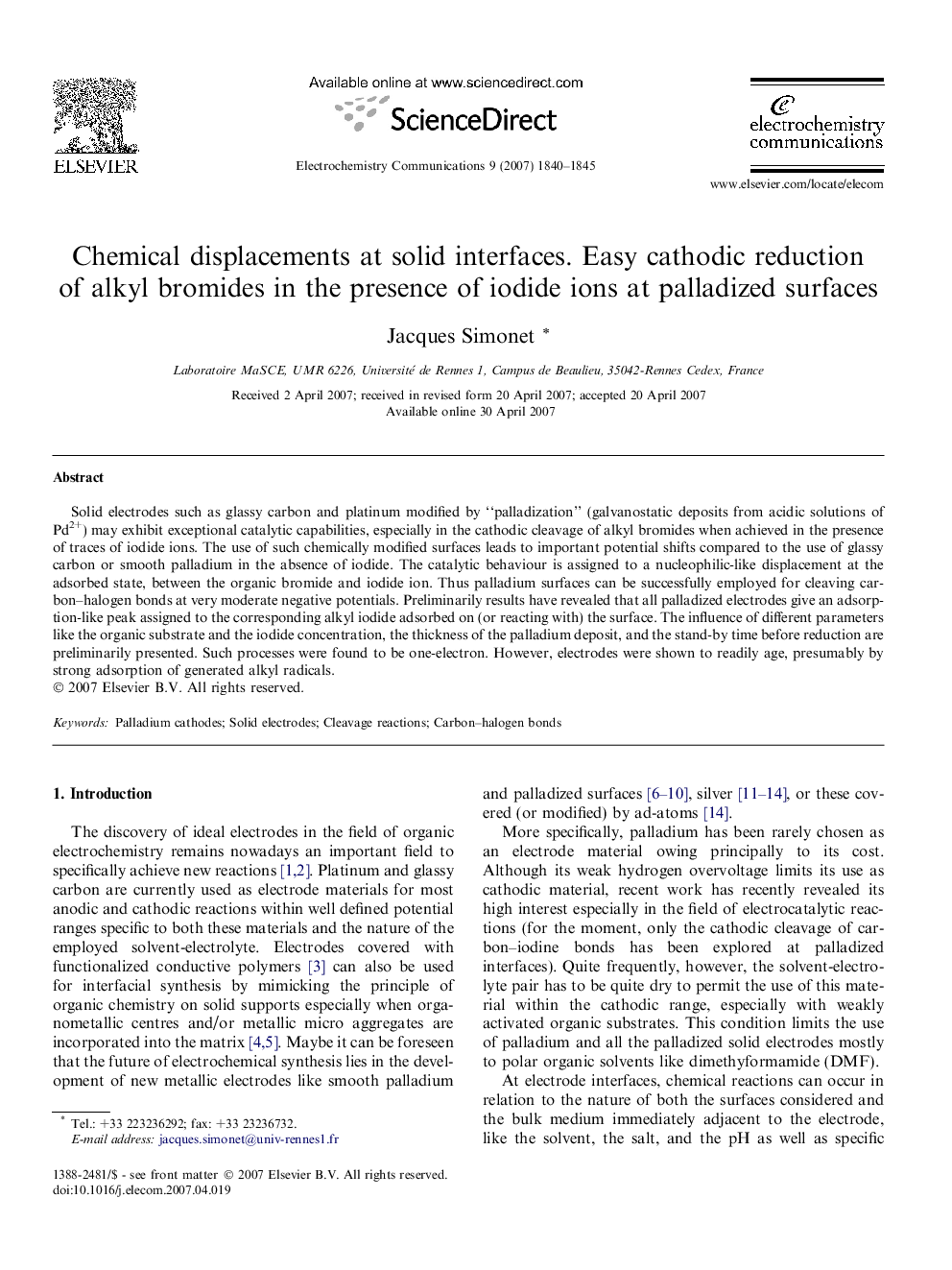| Article ID | Journal | Published Year | Pages | File Type |
|---|---|---|---|---|
| 182268 | Electrochemistry Communications | 2007 | 6 Pages |
Solid electrodes such as glassy carbon and platinum modified by “palladization” (galvanostatic deposits from acidic solutions of Pd2+) may exhibit exceptional catalytic capabilities, especially in the cathodic cleavage of alkyl bromides when achieved in the presence of traces of iodide ions. The use of such chemically modified surfaces leads to important potential shifts compared to the use of glassy carbon or smooth palladium in the absence of iodide. The catalytic behaviour is assigned to a nucleophilic-like displacement at the adsorbed state, between the organic bromide and iodide ion. Thus palladium surfaces can be successfully employed for cleaving carbon–halogen bonds at very moderate negative potentials. Preliminarily results have revealed that all palladized electrodes give an adsorption-like peak assigned to the corresponding alkyl iodide adsorbed on (or reacting with) the surface. The influence of different parameters like the organic substrate and the iodide concentration, the thickness of the palladium deposit, and the stand-by time before reduction are preliminarily presented. Such processes were found to be one-electron. However, electrodes were shown to readily age, presumably by strong adsorption of generated alkyl radicals.
